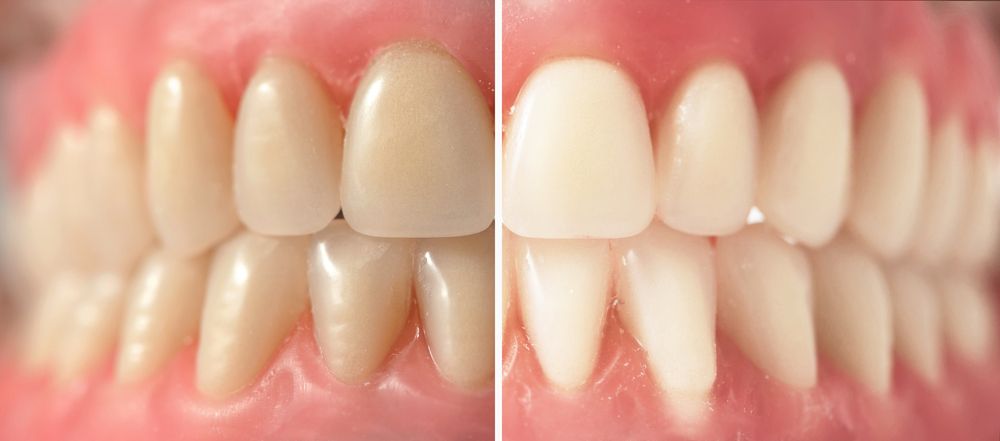Intrinsic vs. Extrinsic Tooth Stains
 Nothing makes an impression like a dazzling, attractive smile. That is why so many of our patients take advantage of teeth whitening, dental bonding, porcelain veneers, and other cosmetic dentistry treatments at our Lake Jackson, TX practice.
Nothing makes an impression like a dazzling, attractive smile. That is why so many of our patients take advantage of teeth whitening, dental bonding, porcelain veneers, and other cosmetic dentistry treatments at our Lake Jackson, TX practice.
Dental discoloration can take a toll on your smile, making it appear lackluster and yellowed. Here, we discuss intrinsic vs. extrinsic tooth stains, and discuss effective treatment options for both.
What Are Extrinsic Tooth Stains?
Caused by staining agents in the modern diet, extrinsic discoloration is the most common type. These stains affect the outermost layer of a tooth, the enamel.
Frequent consumption of dark-colored foods and beverages can stain the teeth. To reduce the occurrence of extrinsic stains, avoid things like tea, coffee, cola, red wine, fruit juice, berries, tomato sauce, and soy sauce.
Treating Extrinsic Tooth Stains
Fortunately, treating extrinsic stains is usually simple, and can be accomplished with teeth whitening. At Bell Dental, we offer in-office and take-home options.
Patients who choose our in-office professional teeth whitening can achieve a brighter smile in just one hour. During this visit, a concentrated bleaching gel is applied to the teeth. The oxygen in the gel penetrates deep into the teeth, breaking apart the chemical bonds that cause stains. After about 15 minutes, the gel is rinsed off and reapplied for another 15 minutes. This process is repeated until the desired effect has been achieved.
Those who prefer to whiten their teeth at their own convenience can choose our take-home bleaching kits. The bleaching gel included in these kits is not as concentrated as our in-office option. However, the same dramatic results can be achieved in about two to three weeks.
A set of personalized bleaching trays will be made for you. To whiten your teeth, you will simply dispense the bleaching gel into the provided trays before placing them over the teeth. Depending on the type of kit you choose, the trays will either be left in for 30 minutes twice a day or overnight.
Both our in-office and take-home whitening procedures can brighten the teeth by several shades, delivering a dramatic result everyone is sure to notice.
What Are Intrinsic Tooth Stains?
While extrinsic stains affect the outer layers of a tooth, intrinsic stains affect the internal surfaces. This type of discoloration is due to genetics or trauma. It can also be caused by certain medications, such as tetracycline antibiotics.
Treating Intrinsic Tooth Stains
Because intrinsic stains affect the internal surfaces of the teeth, they are not usually responsive to teeth whitening. Some professional products may be able to reduce the discoloration, but it is unlikely that they will eliminate it completely.
To treat intrinsic stains, we recommend either dental bonding or porcelain veneers:
- Dental bonding: During this non-invasive procedure, composite resin is applied to the teeth. Next, the material is shaped and molded to blend in with the surrounding teeth. Dental bonding can last up to seven or eight years with proper care.
- Porcelain veneers: Like bonding, veneers conceal discoloration and other aesthetic flaws. Veneers are custom-crafted in a dental lab to fit your unique oral anatomy. To apply veneers, a small layer of natural enamel must be removed. Therefore, veneers are irreversible. They typically need to be replaced every 15 years or so.
Contact Bell Dental
Interested in a brighter, whiter, more brilliant smile? Schedule an appointment to find out how our cosmetic treatment options can enhance your appearance (and your confidence). Contact our practice online.



